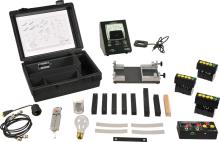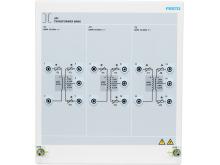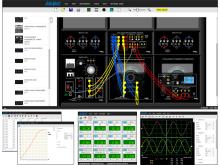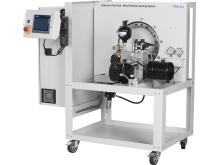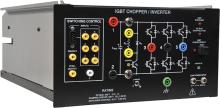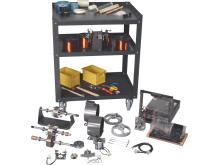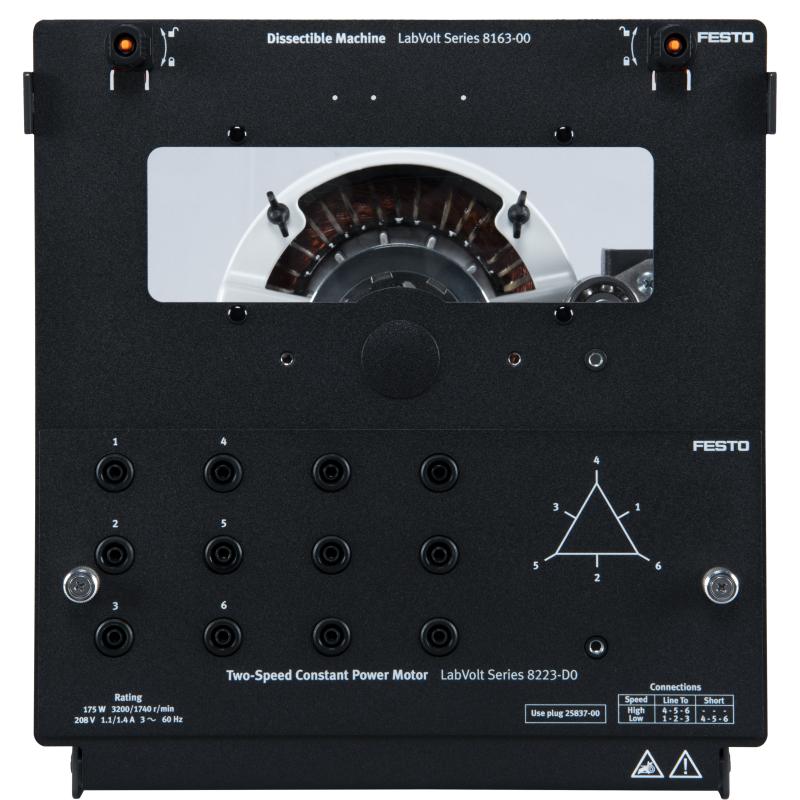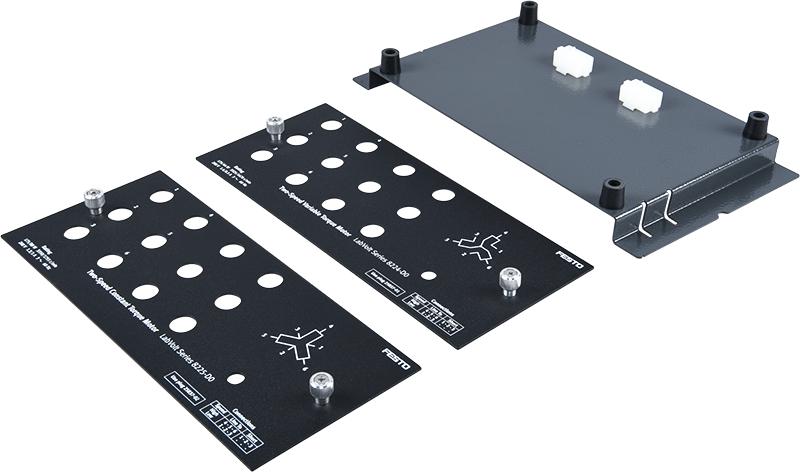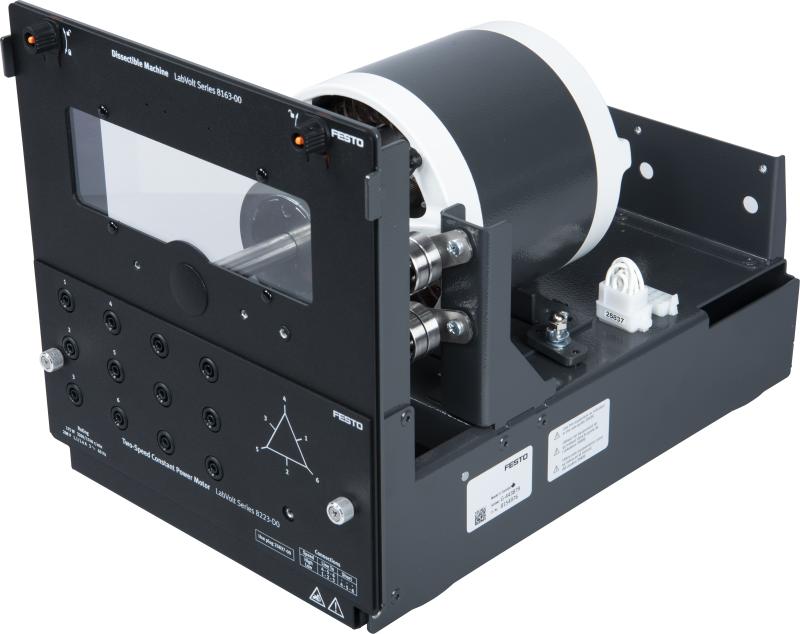Dahlander Two-Speed Induction Motor, Dissectible
8223-EGallery
Description
The Dahlander Two-Speed Induction Motor is an optional Equipment for the Electromechanical system (EMS). This electrical machine is specifically designed to be configurable and replace previous machines from the EMS series.
The machine includes 3 different connectors with a corresponding faceplate that can be installed easily to configure the motor in one of the three following configurations:
- Two-Speed Constant-Power Motor (previously Model 8223): This motor is internally connected to exhibit constant power characteristics at both speeds.
- Two-Speed Variable-Torque Motor (previously Model 8224): This motor is internally connected to exhibit a lower torque characteristic at the lower speed.
- Two-Speed Constant-Torque Motor (previously Model 8225): This motor is internally connected to exhibit a constant torque characteristic at both speeds.
This machine is also designed as a dissectible version which allows students to examine and manipulate the components. Assembly and disassembly don’t require the use of tools.
The shaft of the machine has a concave and slotted end to facilitate the use of tachometers, holding breaks, plugging switches, and inertia wheels. A geared pulley is fitted on the shaft to mechanically couple other machines through the use of a non-slip timing belt. This flexible belt has molded teeth which mesh with the geared machine pulleys. Tension for the timing belt is provided by the idler tensioning ball bearings which are mounted on the machine.
The winding terminations of Two-speed Dahlander Motors are brought to the faceplate to permit operation at either high or low speed. These motors use the method of pole changing based on the consequent pole principle known as the Lindstöm-Dahlander winding.

